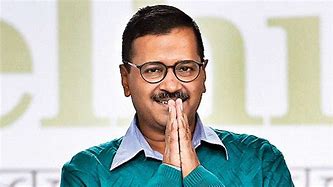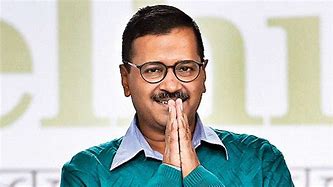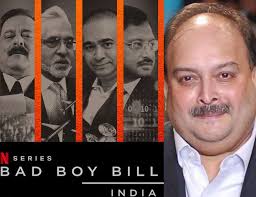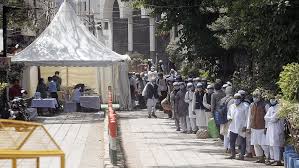Feature
HC seeks details of money spent on ads by Delhi government

New Delhi: The Delhi High Court on Wednesday asked the Arvind Kejriwal-led Delhi government to file a status report with details of money spent by it on advertisements following a Supreme Court direction on the issue.
A division bench of Chief Justice G. Rohini and Justice Jayant Nath observed that “prima facie what you (Delhi government) are doing is in violation of Supreme Court judgment” and with “public money”.
“Having regard to the fact that the Supreme Court issued strict directions… and keeping in view the averments in petitions, the Delhi government is directed to file its response furnishing the details of amount spent on advertisements in print and electronic media after the Supreme Court judgment.
“The Delhi government to also furnish the source of the expenditure on advertisements,” the court said posting the matter for August 3.
The court was hearing a bunch of PILs including a plea by Congress leader Ajay Maken, seeking restraint on advertisements allegedly glorifying Chief Minister Arvind Kejriwal and the Aam Aadmi Party.
Maken, who heads the Delhi unit of the Congress party, also sought direction to restrain the Delhi government from publishing Kejriwal’s name in any of its current or future advertisements.
He alleged that the AAP was violating the guidelines of the Supreme Court, which prohibited the use of photographs of political leaders, including ministers, in advertisements issued by the government and its agencies, saying it leads to promotion of a personality cult.
During the hearing, the bench asked Delhi government counsel Raman Duggal whether the expenses for the advertisements were from the AAP or the city government’s fund.
The counsel replied that the advertisements of the Delhi government were from the party fund, to which the bench asked why it had increased the budget allocation to Rs.526 crore.
The counsel said the government has withdrawn some of the advertisements and hoardings from the capital’s streets.
Another PIL filed by PhD scholar Varun Kumar Mahla sought immediate withdrawal of advertisements by the Delhi government that use phrases like “Kejriwal Sarkar”.
The plea said the act of the government was contrary to a ruling of the Supreme Court which called the development of personality cult of political functionaries at the cost of public money as an “antithesis to democracy”.
Entertainment
Meghalaya Reserves Legalized Gambling and Sports Betting for Tourists

The State Scores Extra High on Gaming-Friendly Industry Index
Meghalaya scored 92.85 out of 100 possible points in a Gaming Industry Index and proved to be India’s most gaming-friendly state following its recent profound legislation changes over the field allowing land-based and online gaming, including games of chance, under a licensing regime.
The index by the UK India Business Council (UKIBC) uses a scale of 0 to 100 to measure the level of legalisation on gambling and betting achieved by a state based on the scores over a set of seven different games – lottery, horse racing, betting on sports, poker, rummy, casino and fantasy sports
Starting from February last year, Meghalaya became the third state in India’s northeast to legalise gambling and betting after Sikkim and Nagaland. After consultations with the UKIBC, the state proceeded with the adoption of the Meghalaya Regulation of Gaming Act, 2021 and the nullification of the Meghalaya Prevention of Gambling Act, 1970. Subsequently in December, the Meghalaya Regulation of Gaming Rules, 2021 were notified and came into force.
All for the Tourists
The move to legalise and license various forms of offline and online betting and gambling in Meghalaya is aimed at boosting tourism and creating jobs, and altogether raising taxation revenues for the northeastern state. At the same time, the opportunities to bet and gamble legally will be reserved only for tourists and visitors.
“We came out with a Gaming Act and subsequently framed the Regulation of Gaming Rules, 2021. The government will accordingly issue licenses to operate games of skill and chance, both online and offline,” said James P. K. Sangma, Meghalaya State Law and Taxation Minister speaking in the capital city of Shillong. “But the legalized gambling and gaming will only be for tourists and not residents of Meghalaya,” he continued.
To be allowed to play, tourists and people visiting the state for work or business purposes will have to prove their non-resident status by presenting appropriate documents, in a process similar to a bank KYC (Know Your Customer) procedure.
Meghalaya Reaches Out to a Vast Market
With 140 millions of people in India estimated to bet regularly on sports, and a total of 370 million desi bettors around prominent sporting events, as per data from one of the latest reports by Esse N Videri, Meghalaya is set to reach out and take a piece of a vast market.
Estimates on the financial value of India’s sports betting market, combined across all types of offline channels and online sports and cricket predictions and betting platforms, speak about amounts between $130 and $150 billion (roughly between ₹9.7 and ₹11.5 lakh crore).
Andhra Pradesh, Telangana and Delhi are shown to deliver the highest number of bettors and Meghalaya can count on substantial tourists flow from their betting circles. The sports betting communities of Karnataka, Maharashtra, Uttar Pradesh and Haryana are also not to be underestimated.
Among the sports, cricket is most popular, registering 68 percent of the total bet count analyzed by Esse N Videri. Football takes second position with 11 percent of the bets, followed by betting on FIFA at 7 percent and on eCricket at 5 percent. The last position in the Top 5 of popular sports for betting in India is taken by tennis with 3 percent of the bet count.
Local Citizens will Still have Their Teer Betting
Meghalaya residents will still be permitted to participate in teer betting over arrow-shooting results. Teer is a traditional method of gambling, somewhat similar to a lottery draw, and held under the rules of the Meghalaya Regulation of the Game of Arrow Shooting and the Sale of Teer Tickets Act, 2018.
Teer includes bettors wagering on the number of arrows that reach the target which is placed about 50 meters away from a team of 20 archers positioned in a semicircle.
The archers shoot volleys of arrows at the target for ten minutes, and players place their bets choosing a number between 0 and 99 trying to guess the last two digits of the number of arrows that successfully pierce the target.
If, for example, the number of hits is 256, anyone who has bet on 56 wins an amount eight times bigger than their wager.





















